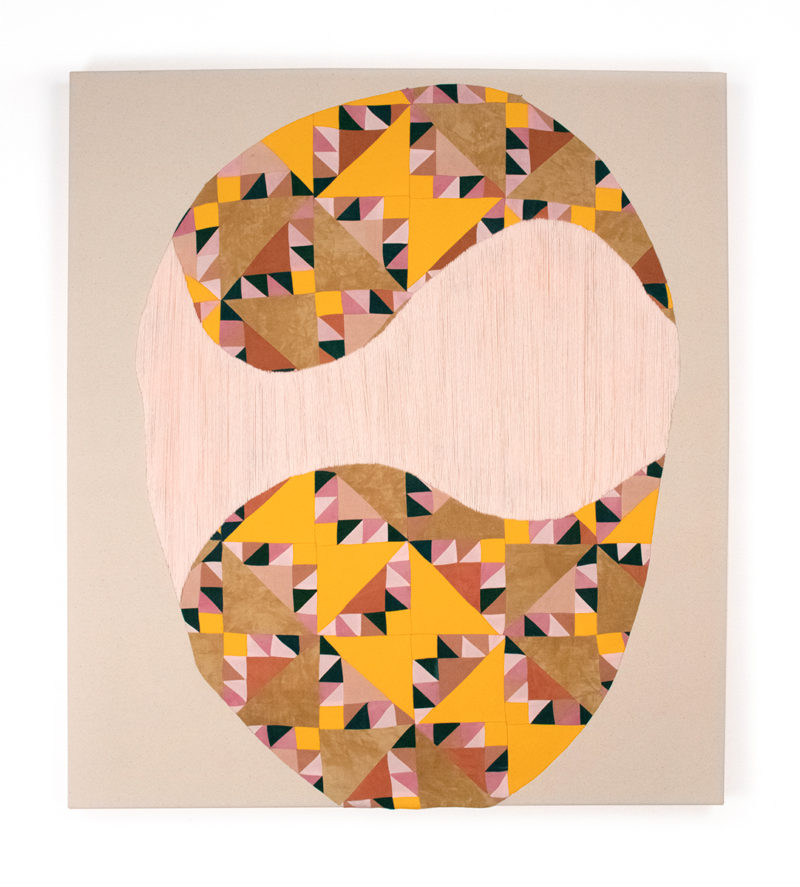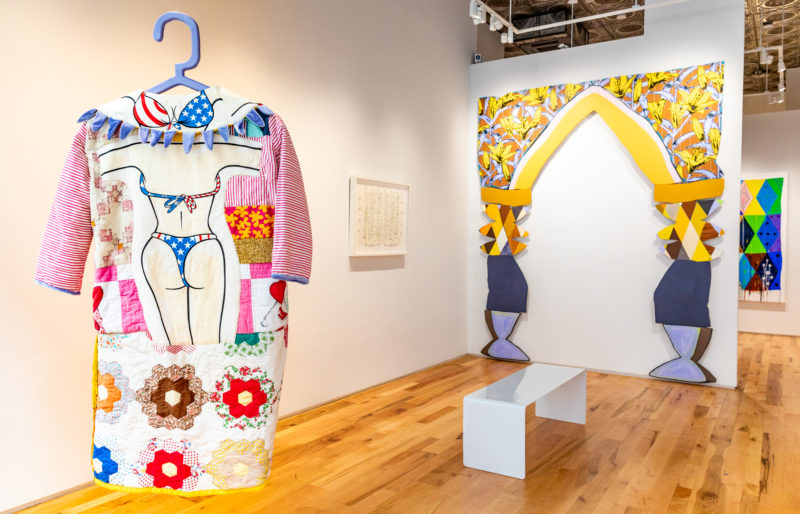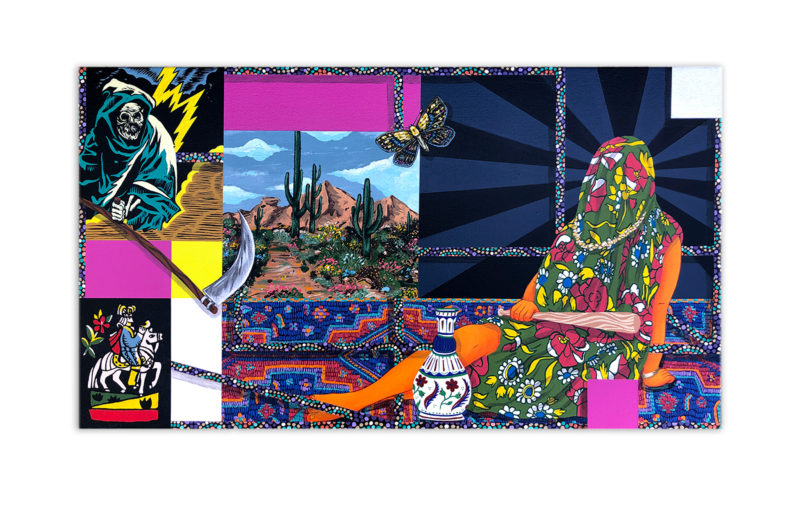
A double pun centers this show: “fringe” might describe an element of fashion ubiquitous to western attire, or else describe something that occurs at the periphery, the edge of a movement. The material itself is indeed found in this group show at Denny Dimin Gallery—along with quilts, crystals, ribbon, cut paper, and more. But the alternate definition applies as well. With a dozen artists on view, “Fringe” documents the contemporary resurgence of interest in the 1970s Pattern and Decoration art…Read More

There’s been a resurgence in recent years of artists using materials like textiles and ceramics in siting domestic settings as creative spaces, a nod to the influence of the 1970s Pattern and Decoration (P & D) art movement. WRITTEN BY: EMILY GOSLING 3 AUGUST 2021 New York-based gallery Denny Dimin Gallery attributes much of this resurgence to the movement’s promotion of female artists and its interest; though it also likely chimes with contemporary practitioners thanks to its place on…Read More

In the early nineteen-seventies, a group of American artists who shared an unironic love of craft, vivid color, and kitsch—rebels against the ornamentation-averse restraint of the Minimalists—became known as the Pattern and Decoration movement (a.k.a. P&D). By the mid-eighties, the initial enthusiasm, mostly in Europe, for the group’s paintings, sculptures, ceramics, and textiles had waned. Individual artists succeeded, but P&D was written off as a footnote that was slightly embarrassing. (And also threatening: it’s no coincidence that the group’s focus…Read More

Ruling families of the Renaissance, such as the Medici, exerted their influence through political intrigue, war and art, as can be seen in The Met’s presentation of The Medici: Portraits & Politics 1512-1570. American high culture, a construct of large institutions, mostly white, endowed by the wealth of corporate donors, also mostly white, is undergoing a radical shift, as consumers are beginning to exert their power to press for better representation of the publics that make up that body of consumers. Above:…Read More
